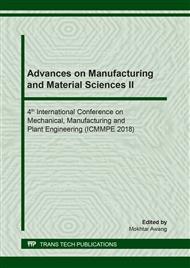p.103
p.112
p.123
p.129
p.137
p.145
p.155
p.164
p.175
Oil-Water Phase Inversion in the Horizontal Section of Upstream 90° Bend during Gas-Oil-Water Three-Phase Flow
Abstract:
The gas, oil and water co-current flow in pipes either flow in separate layers or in the form of a mixture. Other than gas, the liquid mixtures are common during the transportation of oil. In liquid mixtures, one liquid acts as a continuous phase and the other liquid dispersed in it. The phase inversion in three-phase flow majorly depends on the superficial velocity of individual phases, the volume fraction of liquid phases in total liquid and the internal diameter of the pipe. Pipe bends and fittings are commonly used in pipe networks for the diversion and distribution of flow. The 90° elbow bends are commonly used in such systems, where they change the flow direction from horizontal to vertical and vice versa. For the case of horizontal to upward vertical flow, the bend offers restriction to the flow compared to the straight pipe. Therefore, the process of phase inversion gets effected upstream 90° bend. In the current work, the phase inversion process during three-phase horizontal flow upstream 90° bend has been studied. The internal diameter of the pipe was 0.1524 m and the bend radius to diameter ratio (r/d) was 1. The range of superficial velocities are 0.5-5, 0.08-0.4, and 0.08-0.4 for oil-gas and water respectively. The continuous liquid phase and its effect on pressure drop have been studied at various oil to liquid volume ratios (fo). The results show the different oil-water relationships and the liquid holdup occurred due to the bend.
Info:
Periodical:
Pages:
137-144
Citation:
Online since:
March 2019
Authors:
Keywords:
Price:
Сopyright:
© 2019 Trans Tech Publications Ltd. All Rights Reserved
Share:
Citation:


